Learn how to make all-natural dish soap with this simple 3-ingredient recipe. This homemade dish soap cuts grease, suds up, and cleans effectivity.
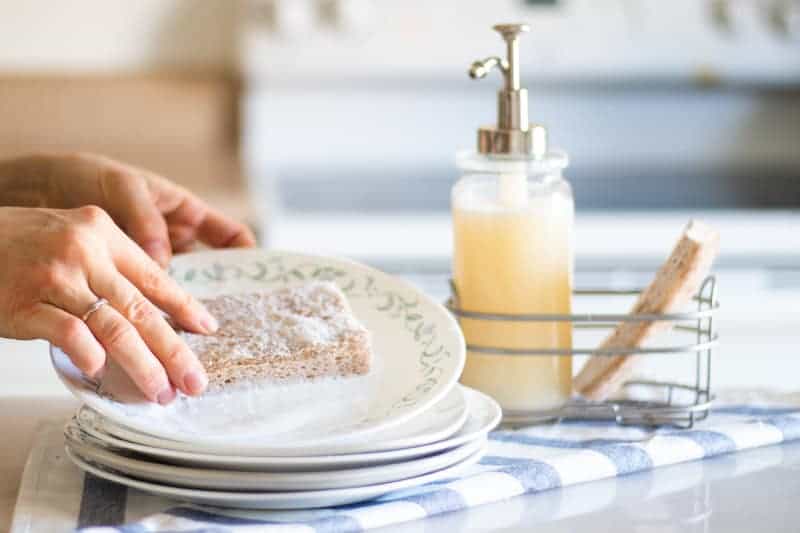
When I made my first dish soap, it wasn’t necessarily something I planned to do. It was more like, uh, I ran out of dish soap and need it right now to finish these dishes kind of thing.
I essentially mimicked my foaming hand soap but added in a little vinegar, citrus essential oils and made a spray out of it. I knew lemon could help cut grease, so I added it in too.
My little creation worked great and we ended up using it for years! Recently, I decided to go back to the drawing board and make an alternative dish soap.
Sharing one common ingredient; lemon essential oil, this is an excellent grease-cutting, gel homemade dish soap.
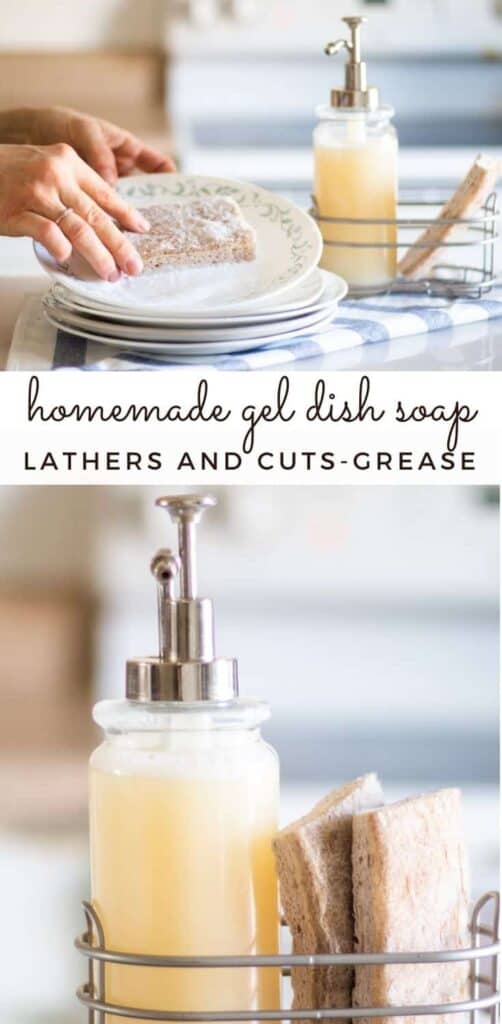
ALL-NATURAL DISH SOAP
Making all-natural dish soap is super easy and won’t take much time. I seldom plan ahead and always end up making this in the middle of dinner clean up. Thankfully, it won’t set you back too much.
To make your own dish soap at home, you will need a soap bar; I use fels naptha, but any will do. You will also need sal suds, vegetable glycerin, and water.
I add in essential oils for two reasons. One, to add scent and two, to help cut grease. However, essential oils are optional and this soap will still work without them.
This post contains affiliate links, which means I make a small commission at no extra cost to you. Get my full disclosure HERE.
INGREDIENTS FOR HOMEMADE DISH SOAP
- Fels Naptha soap bar
- Water
- Sal suds
- Vegetable glycerin
- Essential oils, optional
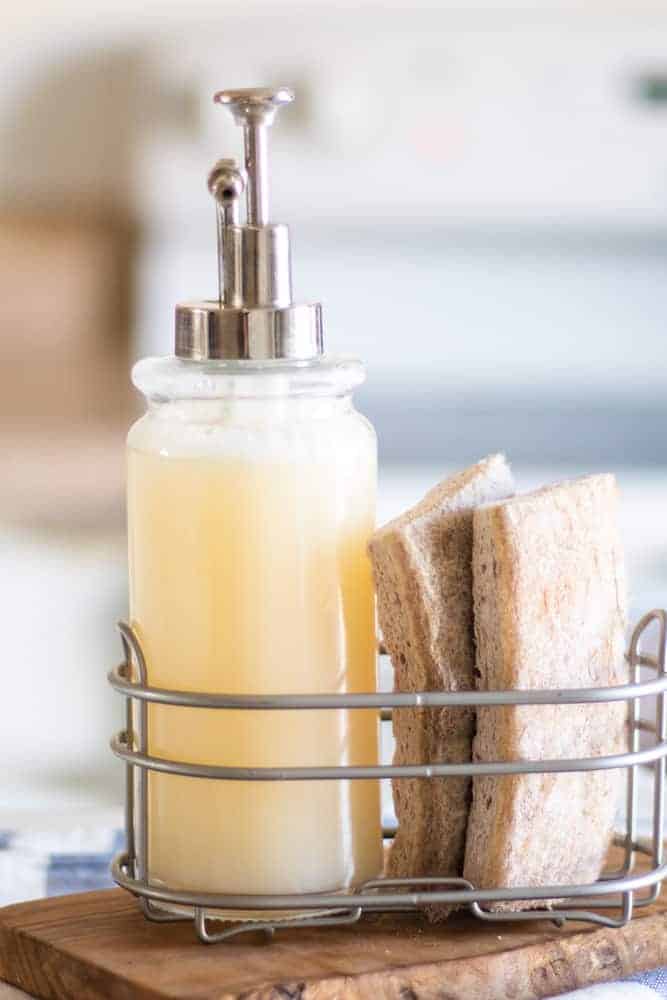
FELS-NAPTHA SOAP BAR
Fels Naptha is a natural soap bar made out of tallow, coconut oil, and palm oil. It is most commonly used to make laundry soap and to help with skin irritations such as poison ivy.
You can use a homemade soap bar or a castile soap bar instead of a fels naptha bar.
WATER
Like most soap recipes, water is the main ingredient. In this recipe, we are heating the water to melt the soap bar in it. I just use water from the sink.
If you have hard water, you may consider using filtered or distilled water.
You can actually use this soap to help lift hard water stains out of white marble.
SAL SUDS
Sal suds is similar to castile soap, but it is more effective at cleaning dishes as it cuts grease. It is also perfect to use for tough stains, hard water and to clean composite sinks.
Sal suds is very concentrated and bubbles a lot. You only need a small amount to make a lathering dish soap.
VEGETABLE GLYCERIN
Vegetable glycerin is a clear thick substance that is made out of coconut, soy, or palm oils. It has a gel-like consistency and will make your dish soap lather.
Vegetable glycerin is found in foods, skin care, cleaners, and cosmetics.
ESSENTIAL OILS FOR DISH SOAP
As mentioned above, essential oils are optional in this recipe. However, I find them to be very helpful. Citrus essential oils have cleansing properties and can naturally cut grease.
My favorite essential oils to use in homemade dish soap as well as dishwasher detergent are lemon, wild orange, and lime. Other oils great in dish soap are lavender, tea tree, lemongrass, and rosemary.
You can use a single essential oil or make a blend by adding a few drops of each oil.
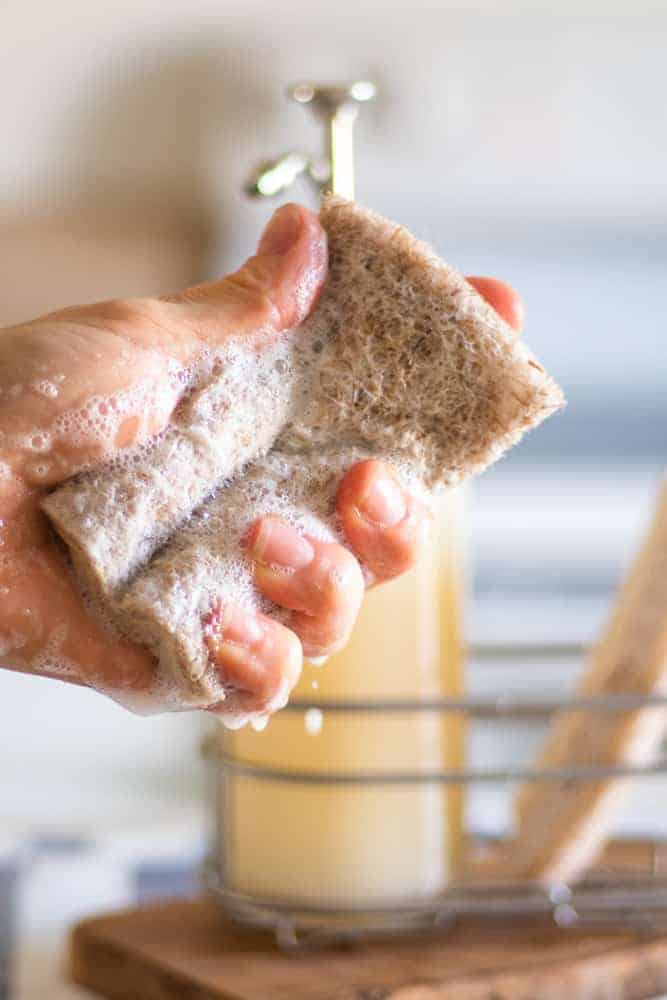
ESSENTIAL OIL BLENDS FOR DISH SOAP
CITRUS
- 5 drops lemon
- 3 drops wild orange
- 2 drops lime
FLORAL
- 5 drops lavender
- 3 drops chamomile
- 2 drops lemon
FRESH
- 5 drops lemon
- 5 drops rosemary
HOW DO YOU MAKE ALL-NATURAL DISH SOAP
- Add water to a small saucepan over medium heat.
- Using a cheese grater, shred the soap bar.
- Add soap shreds to the saucepan, stirring often until the soap is melted.
- Remove from heat and pour the soapy water into the dish soap container.
- Add in sal suds, vegetable glycerin, and essential oils.
- Secure the lid and shake well to combine the ingredients.
NOTES: If you have dry hands, you can add 1 teaspoon of a carrier oil to your dish soap. Jojoba oil, fractionated coconut oil, and sweet almond oil are all great options.
HOW TO USE HOMEMADE DISH SOAP
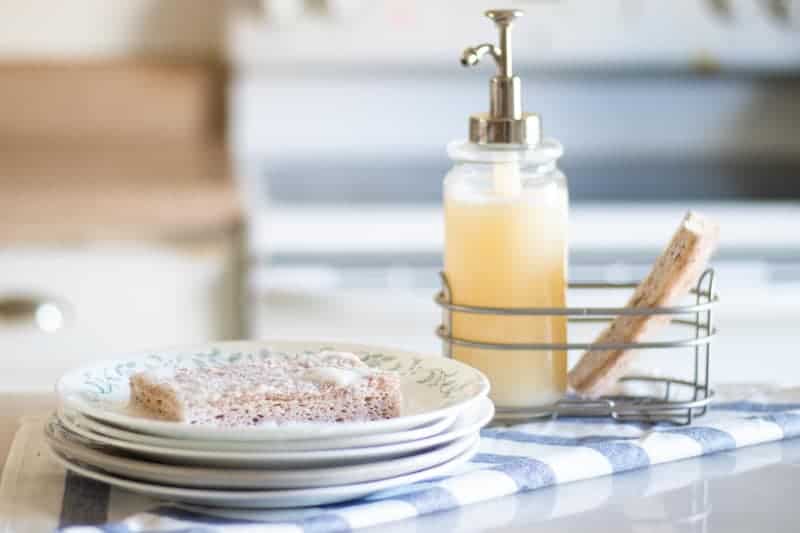
Fill the sink with warm water and add in 1-2 tablespoons of dish soap. Swish the dish soap around in the water and add in the dishes. For best results, allow the dishes to soak for a few minutes before washing.
Or you can put a small amount of dish soap on a clean washcloth and wash each dish. Rinse with warm water and place in the drying rack.
If needed, shake the bottle of dish soap before each use to make sure all of the ingredients are well combined. This is especially important if using essential oils.
HOW TO STORE AND SHELF-LIFE
You can store this soap in a mason jar, foaming soap dispenser, or in an old dish soap container. It is too thick to store in a glass spray bottle.
If you decide to add essential oils to your dish soap, it is best to store it in a glass or metal container. Essential oils can only be stored in high-quality plastic that is thick.
This dish soap will last up to one month. The amount I make in this recipe is the perfect amount for one month.
It is important to remember that this dish soap is concentrated and a little goes a long way. You should only need one tablespoon per washing.
WHY MAKE YOUR OWN DISH SOAP
Over the years, I have slowly transitioned out of using conventional products in my home. At first, before I was making everything, I bought products that “looked” more natural.
Later I learned about greenwashing. Basically, when a product label reads all-natural or plant-based or something green, it doesn’t necessarily mean it is healthier.
In fact, I learned that I was paying way more for something that wasn’t much better and wasn’t made with clean ingredients.
I quickly realized that making my own products was cheaper and healthier. I love knowing exactly what is in my cleaners, drain cleaners, and even dish soap!
If you enjoyed this post, I would love for you to leave a review! And if you are interested in making regular liquid hand soap, check out this recipe here!
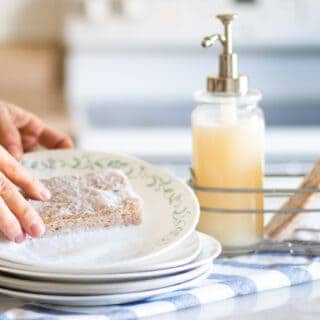
Homemade Dish Soap
Equipment
- saucepan
- Cheese grator
- Dish soap container
Ingredients
- ¼ cup fels naptha soap bar shredded
- 1 ½ cup water
- ¼ cup sal suds
- 1 tablespoon vegetable glycerin
- 10 drops lemon essential oil optional
Instructions
- Pour water into a small saucepan and put it over medium heat.
- Shred the soap bar. I use a cheese grater to do this.
- Add the soap shreds to the saucepan, stirring often until the soap is melted.
- Remove from heat and pour the soapy water into the dish soap container.
- Add in sal suds, vegetable glycerin, and essential oils.
- Secure lid and shake well until all the ingredients are well combined.
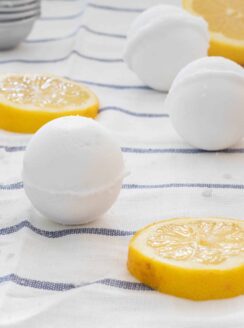
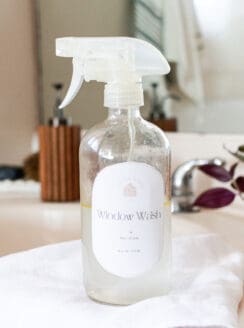
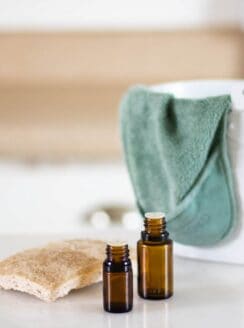
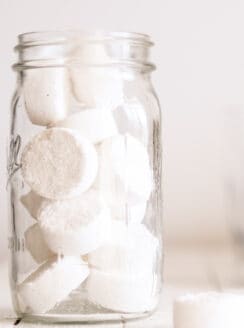
Naomi says
Would you happen to have a weight measurement of the grated fels naptha, or at least tell me whether the flakes are packed in the measurement cup or just lightly piled in? Or does it even matter? Seems to me it would matter since the the grated soap would be light and fluffy.
Selah says
I thunk this is amazing 👏🏾 I do have a question though. Will the soap grow go bad because whenever we use water mold and bacteria can grow, how can we stop that?
Laura says
Thank you, this soap will last about a month before you should make more.
Cassie says
I’m curious if it’s more effective to use a normal soap dispenser verses a foaming soap dispenser. Any recommendations?
Laura says
If you are having trouble with the foaming soap dispenser, I would just add a bit more water to the mixture.
Laura says
I use a normal soap dispenser, though you can certainly use a foaming soap dispenser as well.
Lorna G LACEY says
Hello, Im planning on making this and would love to get the same bottle dispenser you are showing here, can you tell me where to get one like it?
Katelyn M says
Yes, lots of great options on Amazon. Just search for glass dispensers.
Clare says
Great soap!
Thanks for another awesome recipe!
Alexandra Walkup says
I love the soap but I am wondering if it’s supposed to be watery.
Kate says
My soap never thickened up-is been over 24 hours. The only thing I used differently was a Castile soap bar instead of the fels naphtha. Is this normal? Does it take longer than 24 hours?
Laura says
It should thicken by abut 24 hours, however it is liquid so it should not get super thick.
Bethany Warren says
The fels naptha soap has fragrance in it. What would you sub for a more natural soap? Thanks!
Laura says
You can make your own; I have a recipe on my blog.
Kelly says
I tried this recipe and overnight it turned into almost a thick paste so I must’ve messed up somewhere. There’s no way it will come through the foaming dispenser. Any suggestions? I used the fels Napatha
Laura says
You can add some water to the recipe and shake well.
Ellie Juckes says
Hi
Do you have any alternatives to the fels napther soap and also the sal suds as we don’t have either of those things in the UK. Is there anything I can use in their place that would be equally as effective and natural?
Many thanks
Laura says
Dr. Bronners pure castile soap bar is an excellent alternative to fels naptha.
I don’t really have a comparable sub for sal suds. You could try liquid castile soap, though I have not tried it that way.
Josh says
Hi! All our bottles keep getting clogged. We’ve tried everything, cheap or expensive, and nothing seems to work well after a few weeks. Any suggestions?
Laura says
Try a foaming bottle or an old soap bottle.
Jessica says
Hi there! I followed the recipe exactly and it does not get soapy.. Does the soap still clean even if it doesn’t look sudsy?
Laura says
Yes, it will still work!